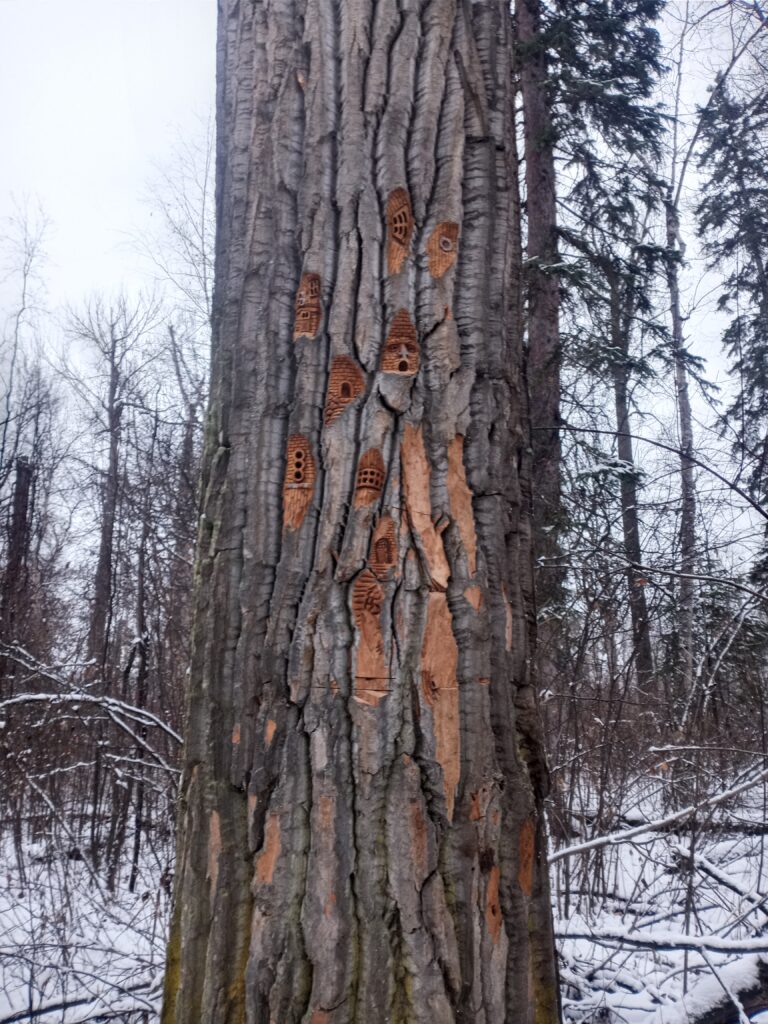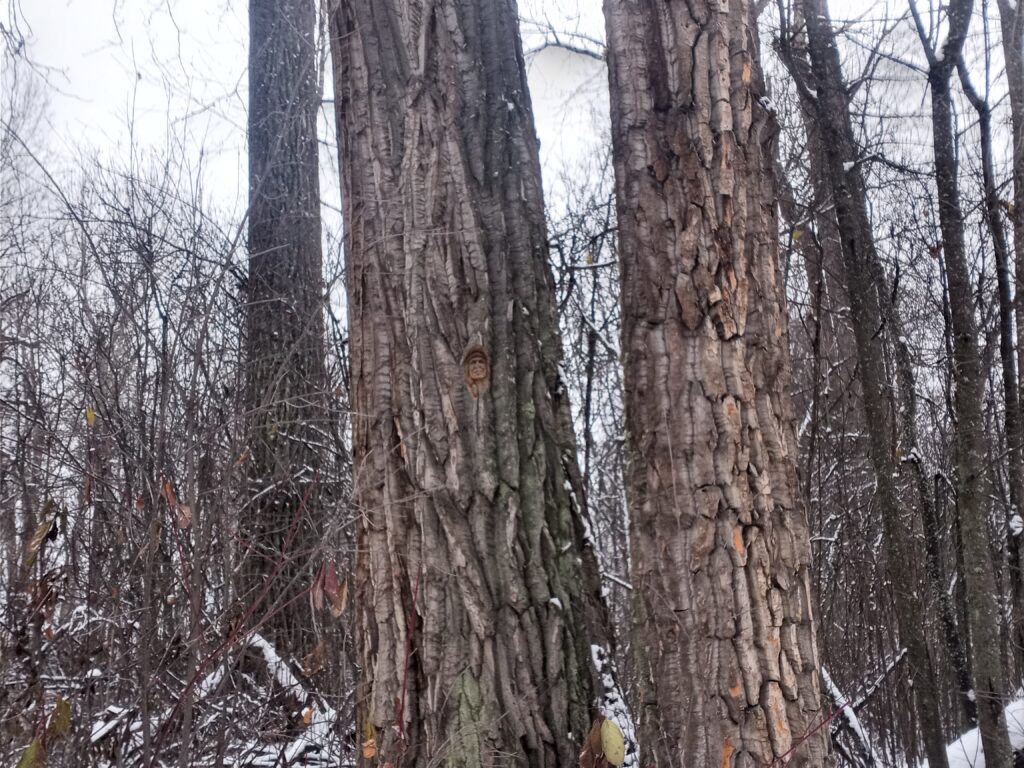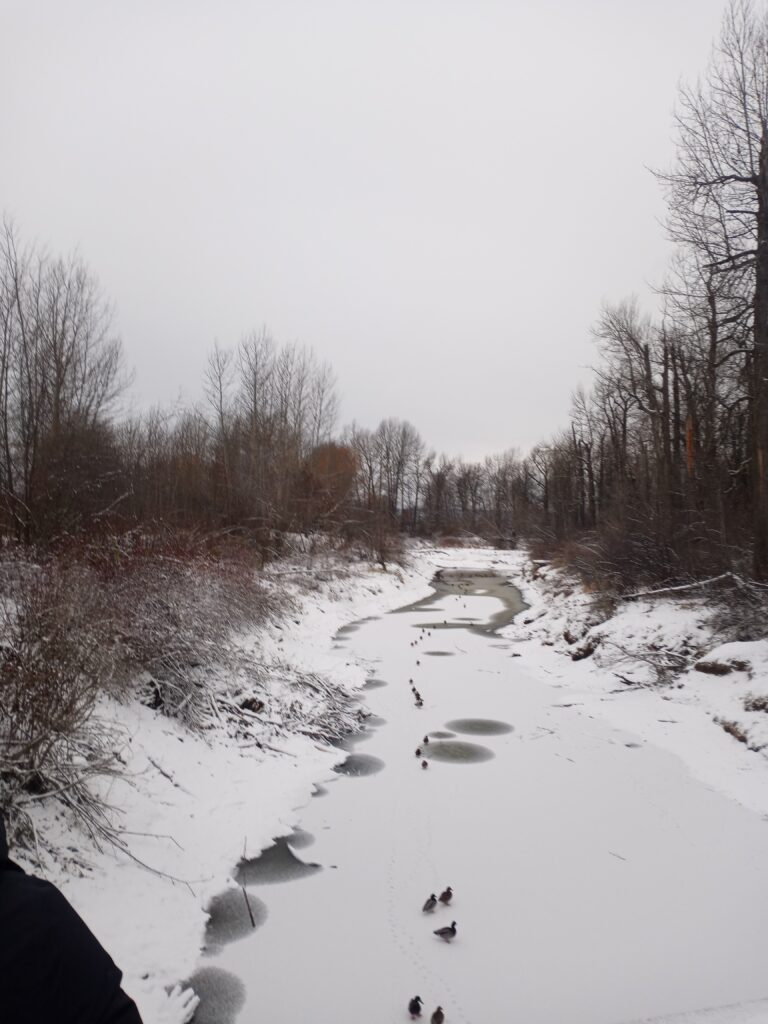On November 16th my cohort went to the Cottonwood Island Park. We walked the park in the snow and though it was cold out, the walk was really enjoyable. We did a few exercises that directed our attention to observing our surroundings. These exercises included a motion walk observing different types of motion in the park, a shapes walk (observing shapes), and a texture walk (observing texture). The direction on the walks to observe and engage with surroundings was good but the more intriguing part for me was the intersection between environment, history, industry, and art. This intersection was present through the plaques with historical information, carvings in the trees, and scenery around the park. I liked the idea that a space can be important on a multitude of levels and disciplines. I want to use this concept in my classroom to help me make my lessons relevant to my students by tying in different subject areas. The plaques provided local history and the nature found in the park provided plenty of observational information about local ecology. The most interesting aspect to me was the carvings on the trees. The carvings were interesting because they showed an interaction between culture and nature. I think this aspect will be great to bring in to classrooms to teach kids how they can interact with their environments and explore their identities. Interaction was the biggest highlight for me as the walk also generated conversation with the other members of my cohort. These conversations raised lots of intrigue and information sharing between the various members of the cohort. I think this kind of learning is impactful for students as they get to interact both with their environment and with each other. The development of information that comes from interaction is important because it is experiential, and self formed. Students forming their own insights into their environments is critical to them learning how their identity and understanding are tied to the land. I hope to implement excursions like this into my teaching to contextualize learning for my students. I also want to facilitate discussion between my students around the environment and their identities.


